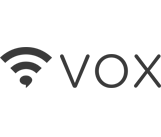What is Native Advertising
What is native advertising? Native advertising was first coined at an internet conference in 2011. But as a technique it’s actually been around since the early 1900’s. Essentially native advertising refers to the message being crafted by the advertiser rather than sponsored by them.  An infomercial is native advertising. The church radio hour is native advertising.  So too are trade magazines published by the industry you’re in. So if it’s been around forever how did native advertising become the leading marketing strategy today? To understand how it happened we have to look at why traditional ads are failing. Traditional advertising is placement of an advertisers message adjacent to or in between the media outlets content.  In print, radio, and TV, the ads would “interrupt” the message.  As more and more content outlets launched there were more and more interruptions.  As the internet grew those messages populated in the same way.  A banner ad on a page you view every day, a pop up ad on one of your favorite websites, and eventually a video ad before that YouTube video you want to watch meant you had to sit through the interruption before you could consume the content.  Same principle only a different medium.  Eventually this type of advertising was labeled “invasive” because it interrupted our viewing, listening or reading experience.  Media buyers looking to gauge the ROI of their campaigns started to look at clicks vs. orders and the conversion rate was born.  What they learned was that the banner ads began to receive less and less clicks. These ‘invasive’ banner ads continued to decline in value for the consumer and by association, for the advertiser as well. So marketers reached back to the idea of the advertiser generating the message. Unfortunately, left to their own devices the advertisertends to push content that looks, sounds and feels just like an ad only bigger which makes it worse. Kind of like CAPITAL LETTERS ON AN EMAIL. If you have to shout your message you’re talking to the wrong people. Remeber when Facebook launched there were no ads and that’s part of what made Facebook so attractive to new users. The more you look the more you’ll notice native ads. A modern example includes the American Express TV channel.  AMEX, which is branded as being exclusive and elite, has a channel that tries it’s best to identify with their target audience.  If the rich and famous have so much free time they shop and travel and therefore it stands to reason that the AMEX channel would be a lifestyle and travel channel. Today with social media accounts your native advertising campaign can be distributed through multiple channels including Facebook, Twitter, YouTube, your blog, and your email marketing program. More than that an effective native advertising campaign will help establish you as the authority in your field and while this AMEX TV channel is not a good example, content generation generally is a fraction of what it used to be.  You don’t need a television production studio and tons of overhead.  By outsourcing your content generation to a company like VOX, LLC you avoid investing  in all of the equipment necessary to crank out that content as well as ending up with outdated equipment.  It’s important because just like this post,  Native advertising helps establish you as the authority in your field.

















